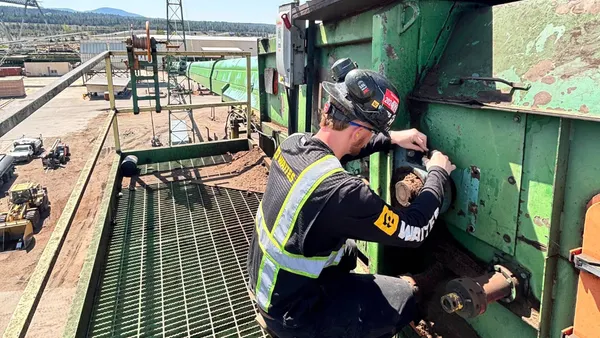Dive Brief:
- Boeing’s commercial aircraft deliveries saw another minor year-over-year increase in Q3, producing 116 aircraft compared to 105 planes in Q3 2023.
- The aircraft titan delivered 92 of its 737 aircraft, six 767s, four 777s and 14 787s. The more than 10% YoY upturn brought the company closer to its goal of producing 38 planes per month by the end of 2024.
- Still, the latest deliveries are a far cry from the trouble plane maker’s capacity before its slew of quality issues this year. The company has only delivered 291 commercial planes so far this year, compared to 371 in 2023.
Dive Insight:
The slight delivery improvement came before Boeing union workers went on strike at the company’s West Coast facilities last month, bringing commercial airplane production to a halt.
The strike by the International Association of Machinists and Aerospace Workers District 751 and W24 threatens to upend Boeing’s ability to meet delivery targets for the rest of the year. The affected facilities include those in Everett and Renton, Washington, where most of 737, 767 and 777 aircraft production is located. Other impacted site locations include Moses Lake and Portland, Oregon, as well as fabrication facilities throughout Boeing’s supply chain and sites in California.
Boeing deliveries see a mild uptick in Q3
Progress on negotiations between Boeing and the union has been slow. On Sept. 23, Boeing released details of its “best and final” offer to IAM members, which union members rejected. Boeing withdrew the offer and filed a labor complaint against IAM on Oct. 10, accusing them of failing and refusing to negotiate. No date has been set to resume negotiations.
“A prolonged strike could have significant financial consequences for Boeing,” Forecast International wrote in an analysis of the IAM 751 strike. “According to TD Cowen, a 50-day strike could cost the company between $3 billion and $3.5 billion in cash flow. The strike is also expected to disrupt the company’s supply chain.”
To date, Boeing has freezed hiring, paused pay increases and implemented temporary furloughs in a bid to preserve cash. Executives, including CEO Kelly Ortberg, have also taken temporary pay cuts.
Meanwhile, some union members have taken temporary jobs as the strike continues and members prepare for prolonged time out of Boeing factories.
Building planes takes a certain skill and those workers can’t be replaced the workers, George Ferguson, Bloomberg Intelligence's senior aerospace, defense and airlines analyst, said Wednesday.
“The cash is dwindling. [Boeing has] a lot of airplanes sitting in inventory. They need to get back to work,” Ferguson said. “And I think if the workers can find a way to hold out, they can get a lot of what they've asked for.”














